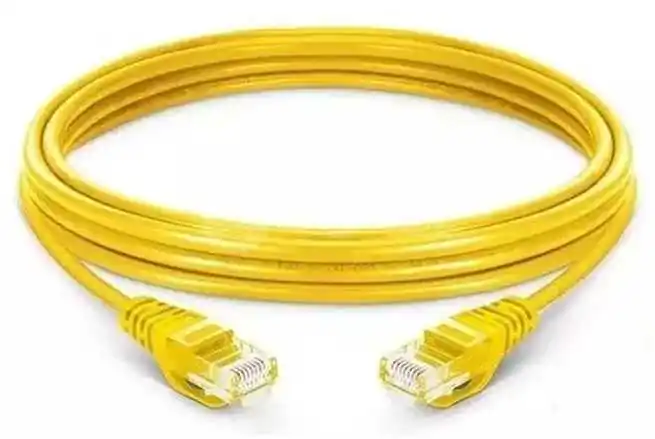Learn the CAT8 network cable through this article
The rapid development of science and technology can be described as changing with each passing day. Category 6 network cables have not yet been fully popularized, and Category 8 network cable has already entered the public eye. However, many friends said that this is a network cable that collects "IQ tax". So, is this really the case? In order to truly understand the Category 8 network cable, we must first understand some of the most basic concepts.
Overview of CAT8 network cable
The network cable has developed from CAT3, CAT5, CAT5e, CAT6, CAT6A, and CAT7 to the current CAT8. With the upgrade of network cable performance, the bandwidth is getting higher and higher, and the "speed" is getting faster and faster.
At present, the performance standard of the latest CAT8 can support the transmission of up to 40Gb/s, the transmission rate is 4 times that of the 10Gb/S super network cable, and the theoretical transmission speed can reach 5120Mb/s, which means that the 5G file can be transmitted in 1 second. Although the transmission speed of Category 8 network cable is as high as 40Gb/s, its maximum transmission distance is only 30 meters, so it is generally used for the connection of servers, switches, patch panels and other equipment in short-distance data centers.
The standard of CAT8 network cable
The relevant standards of CAT8 were officially released by the Communications Industry Association (TIA) committee in 2018, as follows:
Compliant with the IEEE 802.3bq 25G/40GBASE-T standard, which specifies the minimum transmission rate of CAT8, which can support 25 Gbps and 40 Gbps network cable.
Compliant with ANSI/TIA-568.2-D-2018, which specifies CAT8 channels and permanent links, and includes limits for resistance unbalance, TCL, and ELTCTL.
Compliant with ANSI/TIA-1152-A, which specifies measurement and accuracy requirements for CAT8 field testers.
In the ISO/IEC-11801 standard, CAT8 is divided into two categories: Class I and Class II according to the channel level. Among them, Class I CAT8 shielding types are U/FTP and F/UTP, which are backward compatible with CAT5e, CAT6, CAT6A RJ45 connector interface; when Class II CAT8 shielding type is F/FTP or S/FTP, it is backward compatible with non-RJ45 connector interface.
Common structure of CAT8 network cable
Structure 1: Wire pair shielding + aluminum foil overall shielding + sheath;
Structure 2: Wire pair shielding + braided overall shielding + sheath;
Structure three: wire pair shielding + aluminum foil overall shielding + braided overall shielding + sheath.
The difference between eight types of network cables and other network cables
Category 3 cable (CAT3): The transmission frequency is 16MHz, which is often used for voice transmission, and the maximum transmission rate is 10Mb/s.
Category 5e (CAT5e): The transmission frequency is 100MHz, mainly used for 100M and Gigabit Ethernet.
Category 6 (CAT6): The transmission frequency is 250MHz, mainly used for Gigabit Ethernet. Category 6 twisted pair is different from Category 5 super twisted pair in appearance and structure. Category 6 twisted pair adds an insulating cross frame, and the four pairs of twisted pair are placed on the four sides of the cross frame in the groove. Compared with Category 5e, Category 6 cable is more suitable for Gigabit Ethernet.
Advantages and disadvantages of CAT8 network cable
For the same 10 Gigabit network, what are the advantages of CAT8 cable compared to optical cables?
First, copper cabling and installation costs are lower. Second, assuming CAT 8 is widely deployed, the switches and server connections that support it will be much less expensive than using fiber optic cables. In addition, the CAT8 network cable 25/40GBASE-T standard supports an auto-negotiation mechanism, which also provides convenience for data center operators. CAT 8 cables can meet the needs of the public for efficient transmission and stable signals. With the increasing demand for transmission performance by the public, CAT 8 network cables will gradually become the main equipment wiring for short-distance transmission.
However, the CAT8 network cables also have a short board, that is, the maximum transmission distance can only reach 30 meters. Therefore, the CAT8 network cables are mainly suitable for short-distance high-speed bandwidth environments, such as the connection of data center servers, switches, patch panels, and other equipment. For ordinary users with low network requirements, the CAT8 network cables are indeed overkill, but if it is for friends who pursue the ultimate network experience, it is still worth a try.


















View More(Total0)Comment Lists